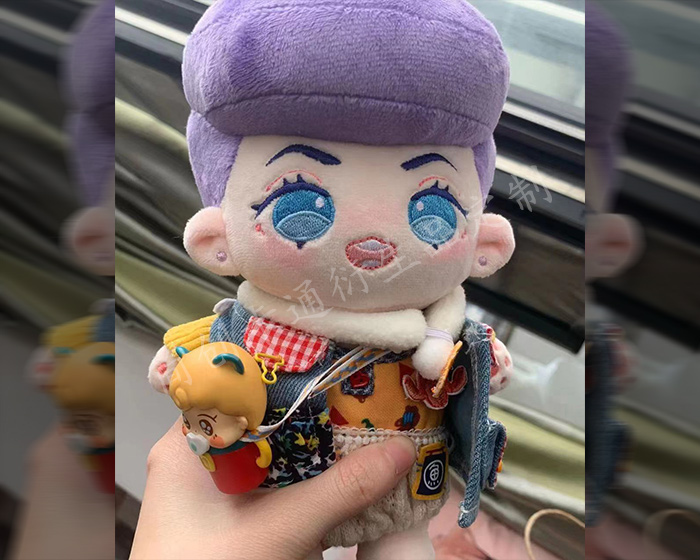stuffed animals are often treasured companions for children and adults alike, providing comfort and joy. However, over time, they can accumulate dirt, allergens, and germs, especially if they are frequently handled or played with. Regular sanitation is important to maintain hygiene and prolong the life of these beloved toys. Here’s a comprehensive guide on how to effectively sanitize a stuffed animal.
1. Check the Care Label
Before proceeding with any sanitation method, the first step is to check the care label on the stuffed animal. Different materials may require different cleaning methods. Some stuffed animals can be machine washed, while others may need to be hand washed or spot cleaned. Understanding the manufacturer’s instructions will help you choose the best approach.
2. Basic Cleaning
Start with a basic cleaning to remove surface dirt and dust:
-
Vacuuming: Use a handheld vacuum with a brush attachment to gently remove dust and loose dirt from the surface of the stuffed animal. Pay special attention to seams and crevices where dirt tends to accumulate.
-
Brushing: For plush materials, a soft brush can help lift dirt and restore the fabric's texture. Brush the surface gently to avoid damaging the fibers.
3. Machine Washing
If the care label allows for machine washing, this is often the most effective way to sanitize a stuffed animal:
-
Preparation: Place the stuffed animal in a mesh laundry bag to protect it during the wash cycle. This also helps prevent snagging on other items in the wash.
-
Choose the Right Settings: Use a gentle cycle with cold water and a mild detergent. Avoid bleach and harsh chemicals, as they can damage the fabric and colors.
-
Drying: After washing, air dry the stuffed animal to prevent heat damage. Lay it flat on a clean towel or hang it up in a well-ventilated area. If the care label allows for it, you can use a low heat setting in the dryer, but monitor it closely to avoid potential damage.
4. Hand Washing
For delicate or vintage stuffed animals, hand washing may be the best option:
-
Prepare Soapy Water: Fill a basin or sink with lukewarm water and add a small amount of mild detergent. Mix until suds form.
-
Gently Clean: Submerge the stuffed animal in the soapy water, gently squeezing and rubbing the fabric to release dirt. Avoid scrubbing too hard, as this can damage the fibers.
-
Rinse Thoroughly: Rinse the stuffed animal under cool running water until all soap is removed. Be sure to squeeze out excess water gently without twisting or wringing the toy, as this can cause misshaping.
5. Spot Cleaning
For quick sanitation or addressing specific stains, spot cleaning is an effective method:
-
Damp Cloth Method: Dampen a clean cloth with water mixed with a small amount of mild detergent. Gently rub the stained area, taking care not to soak the fabric.
-
Disinfectant Spray: Use a fabric-safe disinfectant spray that’s free from harsh chemicals. Spray lightly over the surface and allow it to dry completely. Make sure to test any spray on a small, inconspicuous area first to ensure it won’t discolor the fabric.
6. Deodorizing
To keep your stuffed animal smelling fresh, consider deodorizing:
-
Baking Soda: Sprinkle a light layer of baking soda over the stuffed animal and let it sit for several hours or overnight. Shake off the excess baking soda to remove odors.
-
Essential Oils: A few drops of fabric-safe essential oils (like lavender) on a cotton ball can add a pleasant scent. Place the cotton ball in the stuffed animal’s storage area or near it, but avoid applying oils directly to the fabric.
7. Regular Maintenance
To keep stuffed animals clean and sanitized, establish a routine:
-
Frequent Vacuuming: Regularly vacuum your stuffed animals to remove dust and allergens.
-
Periodic Washing: Depending on usage, aim to wash or sanitize stuffed animals every few months, or more often if they are heavily used.
Conclusion
Sanitizing a stuffed animal is essential for maintaining hygiene and prolonging its life. By following these steps—checking care labels, choosing appropriate cleaning methods, and incorporating regular maintenance—you can ensure that your beloved plush companions remain clean, fresh, and ready to provide comfort for years to come.
The following are some examples of plush toys that our factory customizes for customers. Check out if there is one that you like best.
-
Custom Animal Plush
-
Cute Plush Doll
-
Custom Stuffed Animals
-
Plush Toy
-
Plush Dolls
-
Custom Stuffed Dolls
-
Custom Plush Toy
-
Cotton Dolls
-
Weighted Plush Toys
-
Cute Stuffed Animals
-
Custom Pet Stuffed Animal
-
Warmies Stuffed Animals
-
Weighted Stuffed Animal
-
Soft Toys
-
Plush Stuffed Doll
-
Custom Stuffed Dolls
-
Plush Maker
-
Bear Stuffed Toy
-
Anime Plush
-
Custom Stuffed Animal
-
Anime Plush
-
Custom Plush Toy
-
Personalised Stuffed Animal
-
Plush Animal Toys
-
Custom Plush Makers
-
Custom Plushies
-
Toy Manufacturer
-
Rag Doll Making
-
Custom Toys
-
Dog Plush Toys
-
Custom Rag Doll
-
Stuffed Animals
-
Custom Plush
-
Custom Plush Dolls
-
20cm Cotton Doll
-
Jojo Plush
-
Custom Doll
-
Jojo Doll
-
Large Plush Toys
-
15cm Cotton Doll
-
Dumpling Plush
-
Cotton Doll


























